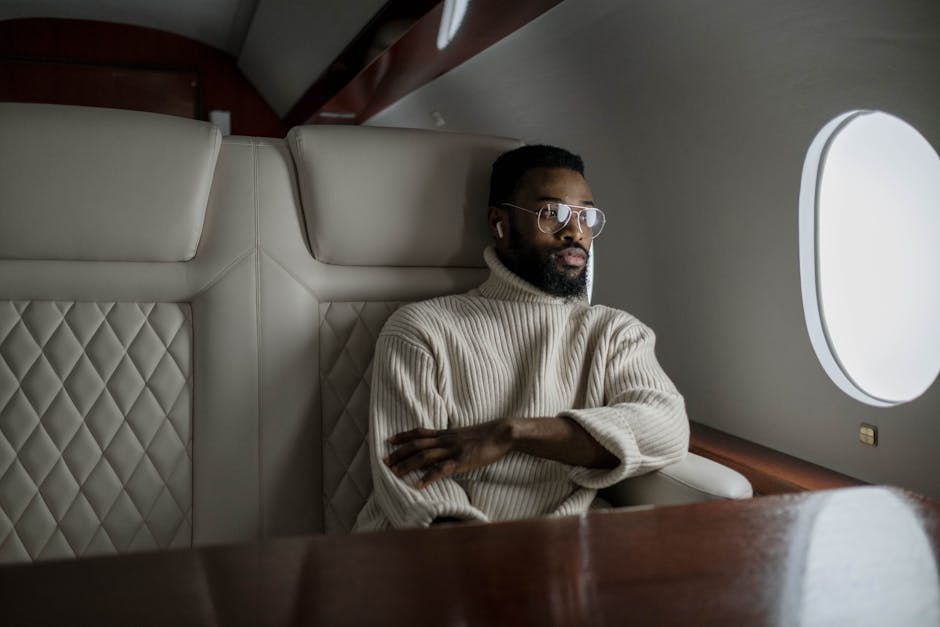The Rise of Premium Economy: A Comfortable and Affordable Travel Option
Air travel has come a long way since its inception, and in recent years, one option has been quietly gaining traction among travelers: premium economy. Sitting snugly between the cramped quarters of economy class and the opulent luxury of business class, premium economy offers a blend of comfort and affordability that appeals to a wide range of passengers. If you've ever found yourself wishing for more legroom without breaking the bank, this might be the option you've been waiting for.

What Makes Premium Economy Stand Out?
Economy class can sometimes feel like an endurance test. Cramped seating, limited recline, and barely-there meals can leave even the most patient flyers counting down the minutes until they land. On the other hand, business class (with its fully-flat beds, gourmet meals, and sky-high prices) can feel out of reach for many. Enter premium economy: a middle ground designed to offer better comfort at a relatively reasonable price.
Typically, premium economy seats are wider, offer more legroom, and recline further than their economy counterparts. While exact features vary by airline, some even include perks like priority boarding, upgraded meals, and amenity kits. For example, on Singapore Airlines’ premium economy class, passengers are treated to wider seats with adjustable footrests and a personal reading light, touches that make long-haul flights far more bearable. Similarly, Virgin Atlantic offers dedicated check-in counters and a welcome glass of bubbly to set the tone for
In terms of cost, tickets generally fall into a sweet spot: around 65% more expensive than economy but significantly cheaper than business class. For travelers seeking a little extra comfort on international flights without doubling or tripling their airfare costs, this added expense often feels justifiable.
The Growing Popularity of Premium Economy
It’s not just passengers who appreciate this cabin class, airlines are increasingly investing in it too. With demand growing steadily over the past decade, carriers have realized that premium economy fills an important gap in their offerings. According to aviation consultancy firm CAPA centreforaviation.com, airlines see it as a way to upsell economy travelers while also attracting budget-conscious business flyers.
Delta Air Lines launched its Premium Select cabin in 2017 to compete with global airlines offering similar services. Since then, other major players like British Airways and Lufthansa have followed suit by enhancing their premium economy cabins with state-of-the-art entertainment systems and superior dining options. Even low-cost carrier Norwegian Air introduced a premium cabin as part of its transatlantic routes before shifting focus due to operational changes.
These investments make sense when you consider passenger behavior trends. According to a 2022 report from travel analytics firm OAG oag.com, over 35% of surveyed travelers were willing to pay extra for enhanced comfort during long-haul flights, a clear indication that there’s room for growth in this market segment.
Is Premium Economy Worth It?
The answer largely depends on your priorities as a traveler. Are you someone who dreads the idea of being squished into a narrow seat for hours on end? Do you value small luxuries like faster check-in or improved meal quality? If so, premium economy might be worth considering.
For example, imagine flying from New York City to London, a popular route for both leisure and business travelers. An economy ticket might cost $700 round trip on average during non-peak seasons, whereas premium economy could run about $1,100. While that’s an additional $400 out of pocket, you’d enjoy a more spacious seat (some airlines offer up to 38 inches of pitch compared to 31 in standard economy), better food options, and possibly even noise-canceling headphones or other small perks depending on the carrier.
That said, it’s important to weigh these benefits against your budget and personal preferences. If you’re someone who rarely notices discomfort in standard economy or prefers saving money for activities at your destination instead of splurging on flights, sticking with traditional seating may still make sense.
How Airlines Differentiate Their Premium Offerings
Not all premium economies are created equal and that’s where doing your research pays off. Some airlines truly go above and beyond with their offerings while others provide little more than slightly larger seats and a fancier meal tray.
A helpful tool for comparing services is SeatGuru seatguru.com, which allows travelers to view detailed seat maps and reviews from previous flyers. For instance:
- Qantas: Renowned for its thoughtful touches like memory foam cushions and upgraded meal service featuring Australian wines.
- Cathay Pacific: Offers an elegant experience with reclining seats in a cozy 2-4-2 configuration, ideal for couples or solo travelers looking for extra privacy.
- Ana (All Nippon Airways): Provides generous baggage allowances alongside spacious seats designed with Japanese craftsmanship in mind.
If amenities matter most to you (such as access to exclusive airport lounges or in-flight Wi-Fi) it’s worth checking what each airline includes before booking your ticket.
There’s every indication that premium economy will only keep improving. Hybrid work models have led many professionals worldwide to reevaluate how often they travel and what level of comfort they expect during trips. Next time you’re planning a long-haul flight or even just daydreaming about future travels, why not explore what this middle ground has to offer?
This article was generated by AI